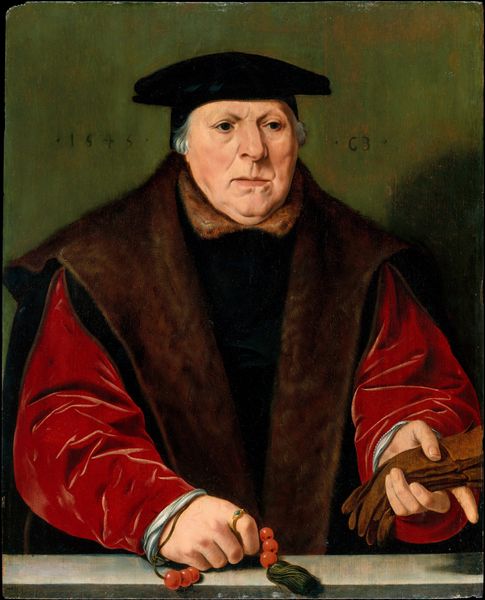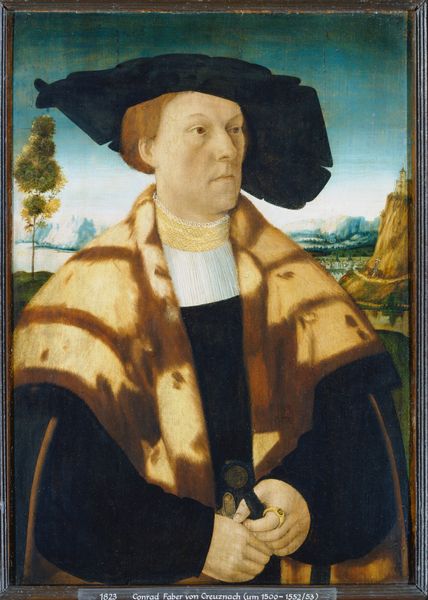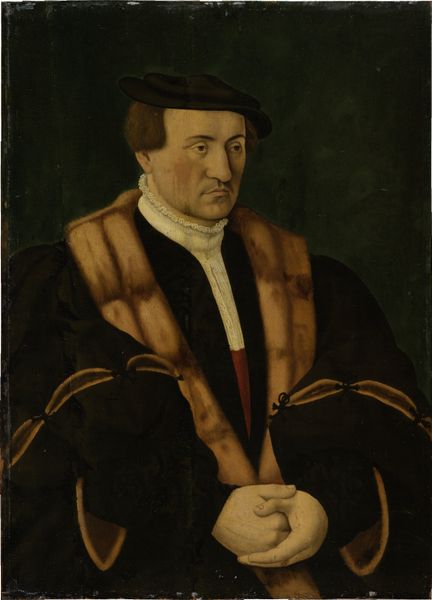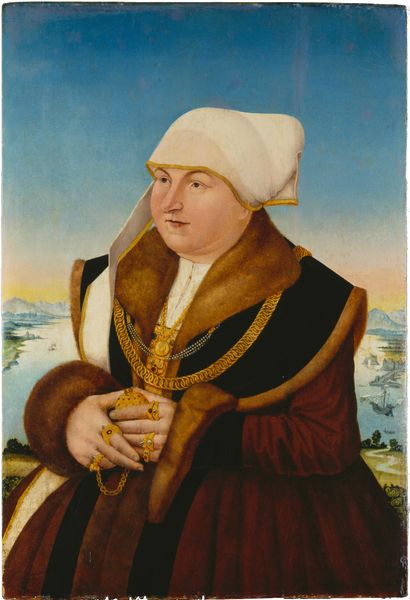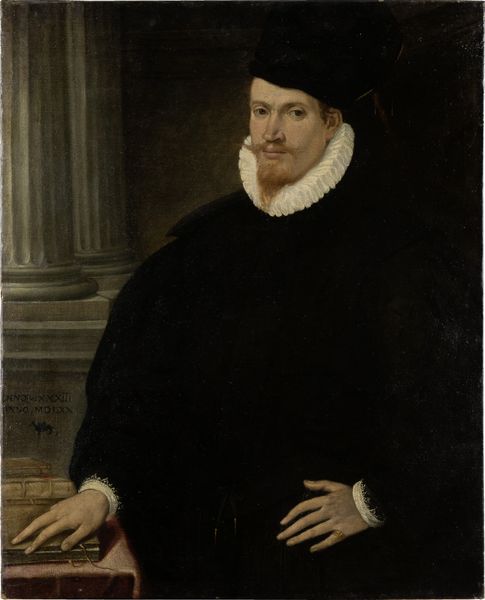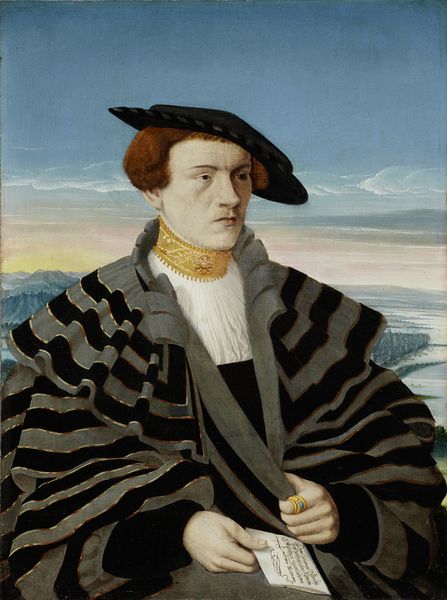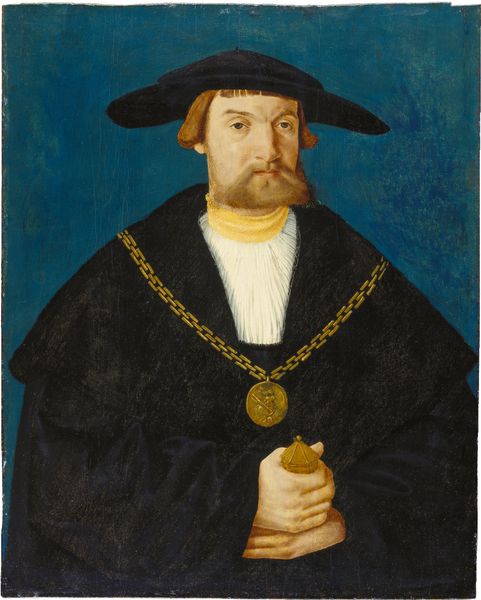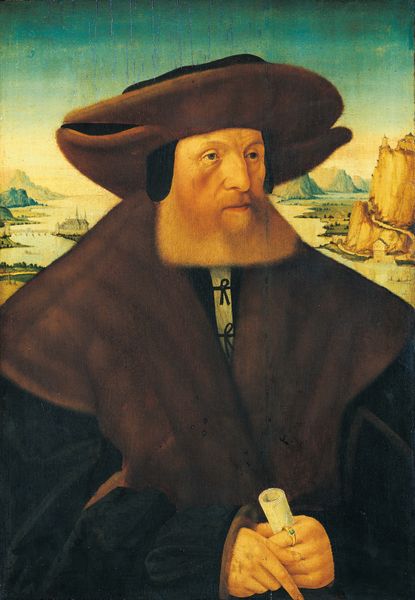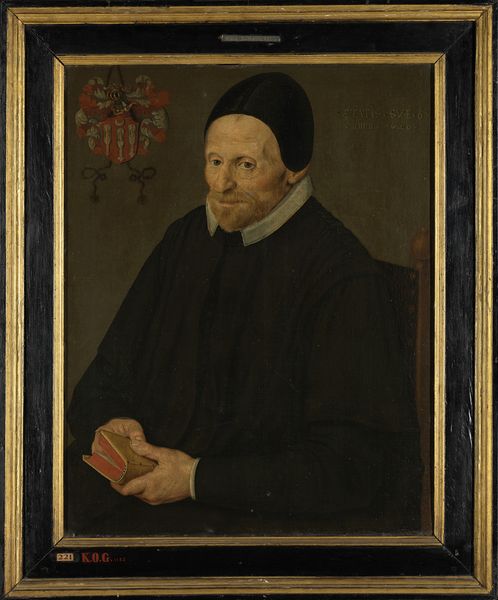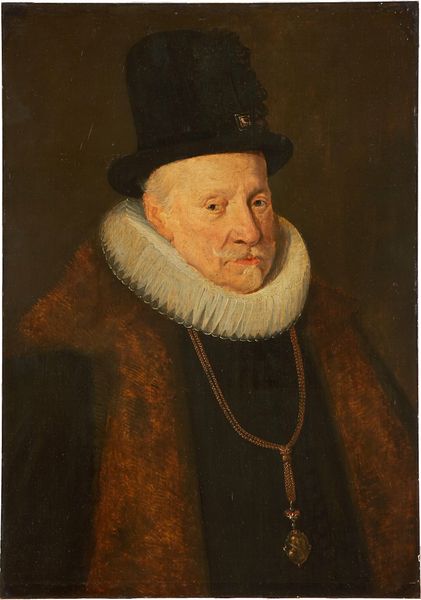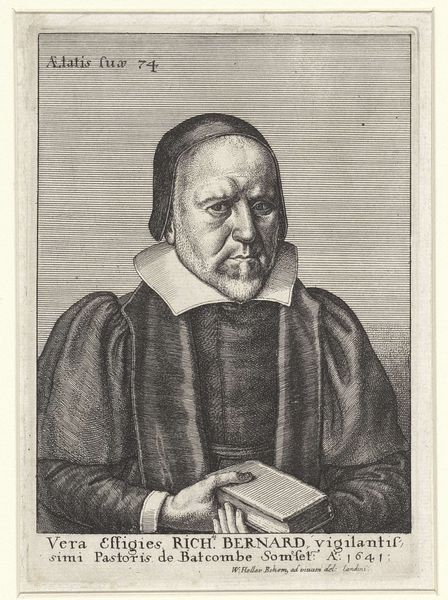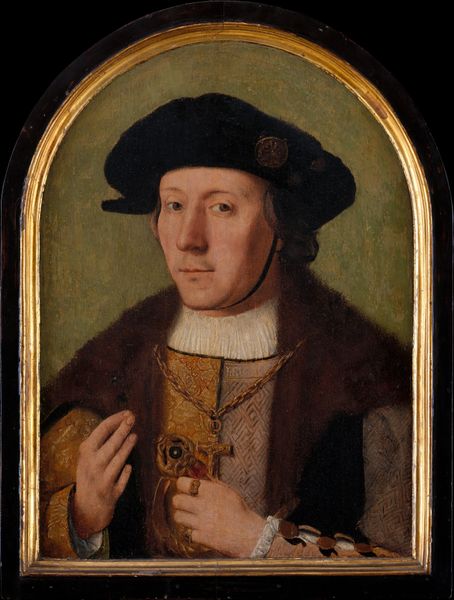
Portrait of a Man from the Stralenberg Family (_) c. 1545
0:00
0:00
painting, oil-paint
#
portrait
#
painting
#
oil-paint
#
11_renaissance
#
oil painting
#
italian-renaissance
#
portrait art
#
realism
Dimensions: 53.7 x 39.8 x min. 0.4 cm
Copyright: Public Domain
Editor: Here we have Conrad Faber von Kreuznach’s "Portrait of a Man from the Stralenberg Family," created around 1545. It's an oil painting with an almost severe formality to it. What strikes you most about this piece? Curator: It's interesting how the portrait attempts to convey power and status, but ultimately reveals anxieties about social mobility during the Renaissance. Who were the Stralenbergs, and what did it mean for them to commission this portrait? This wasn't just about likeness; it was a statement about belonging and aspiration. Editor: I hadn't considered the 'statement' aspect so directly. The way he holds that dagger feels quite deliberate now. Curator: Precisely. And what does that backdrop—with the suggestion of a distant city and ship—say about his ambitions, his world? Consider how this portrait is staged, really. How is he attempting to negotiate the shifting sands of social class and power through his presentation? Editor: So it’s about more than just capturing a face; it’s about capturing a moment of social change? The landscape is sort of a stage for his identity? Curator: Exactly! It invites us to analyze portraiture beyond surface appearances and explore the underlying tensions related to class, identity and representation. This wasn't a static society, and his very presence in the frame speaks to that dynamism – and perhaps also to his anxieties surrounding it. How effective do you think he is in projecting power, given the stylistic constraints of the time? Editor: Thinking about it, the stiffness kind of betrays the effort, which weakens the effect overall, in my opinion. Thank you. This was incredibly helpful. Curator: It's in that tension – the aspiration versus the execution – that the portrait truly speaks. I’ve gained a new appreciation of the layered, and sometimes contradictory messages that artworks can send about class, aspiration, and the anxieties of the era.
Comments
No comments
Be the first to comment and join the conversation on the ultimate creative platform.
